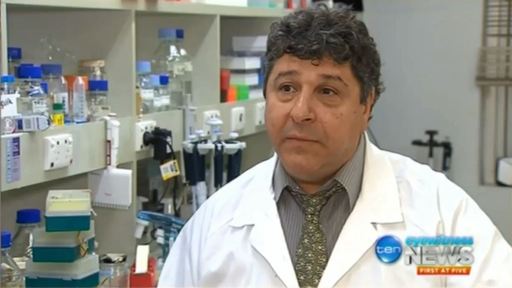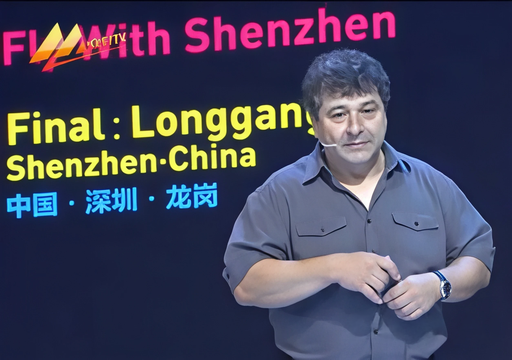“If education wasn’t free, I wouldn’t be here,” George explained as he described what we would consider a most difficult start to life. Despite being raised by his mother alone in very difficult financial circumstances when he was young, George talks about a happy childhood with his mother and sister. Going to public schools that were very under resourced, George supplemented his education by joining libraries and spending his time delving into the textbooks that developed his real love in science. Books that taught him to do experiments and how to build things.
“And if education wasn’t free, I wouldn’t have been able to go to La Trobe University to study biological sciences,” gaining an honours and PhD and a Commonwealth scholarship from the Government.
And as with life, one thing leads to another, and while he was a lecturer at Royal Melbourne Institute of Technology (RMIT University), he was invited to Denmark to give a presentation on a key area of research he was focussing on regarding mutations in DNA and how it affects our aging. In the audience was a scientist from the National Institutes of Health USA (NIH) and George was invited to the NIH as a Courtesy Research Fellow.
Most of us have no concept of what’s involved in bringing us the medications we need. Whether it is a ‘simple’ over-the-counter medication, prescription or controlled treatment, it has been through stringent testing and regulatory procedures followed by complex commercialisation processes and negotiations. Many scientists stay focussed on the research and discovery, but some like George step into the commercial realm, seeing their inventions through to production.

The experience George gained in his years in the US became valuable when he returned to Australia and joined a start-up as a founding scientist which became acquired and merged with high profile research and drug companies three times. For each, George performed a critical role developing new drugs and inventing new technology platforms.
But the time came when George decided to press the refresh button and focus on what really mattered to him, and what he could further deliver in terms of solutions that would have a direct impact on treatments or cures.
I thought about how I could build a new direction and continue to make a direct contribution to the treatment of diseases. Thinking about the drugs I had created in the past and how to continue my work designing and building new drugs using methods I had already developed.
That’s when George established Imunexus Therapeutics focussing on supercharging existing drugs to make them more effective.
Imunexins are small protein modules that can be engineered to have a specific therapeutic function and can be easily attached to any other protein including monoclonal antibodies and enzymes. Conventional antibody drugs are specific to one therapeutic target (monospecific). Attaching imunexins with different therapeutic functions to an antibody creates a second therapeutic function in addition to the original one making the antibody bispecific. This second function provided by the attached imunexin adds a differentiating therapeutic advantage to the original antibody drug.
Effectively, adding imunexins ‘turbo-charges’ the parent antibody’s performance bringing advanced science for tough-to-treat diseases like autoimmune conditions, cancer and infections.

George and his team have developed a number of imunexins with different therapeutic functions however his big personality compelled him out of the lab and onto the stage, where in China in 2016 his presentation Ranked 2nd in a Global Competition up against a thousand participants from around the world judged by a panel of experts that included international scientists, a Nobel Prize winner in medicine, biotechnologists, business leaders and Venture Capitalists.
George will talk to anyone who will lend their weight to the need to innovate and fund improved treatments. Interviewed by personalities, authors, reporters and venture capitalists, his company was cited on Australia’s Channel 10’s Eyewitnesses News as the company ‘who is leading the way on how we fight cancer by supercharging drugs that already exist’.
But there is always a struggle to raise funding for any scientific discovery, a small organisation may lack the overheads but also the resources.
Because of my upbringing I’ve learned how not to waste money, but we have products on the shelves that can improve treatment and save lives if we had the funding to complete the research.
One key project needing funding is an exciting new treatment for multiple sclerosis (MS). The drug called IMX39P gives great hope as a new approach for MS patients. In animal models of MS, IMX39P not only halts the progression of MS and prevents further damage to nerve cells, it also induces repair of the damaged nerve cells by repairing the myelin layer of damaged nerves restoring mobility and improving the physical and mental condition of the animals suffering from MS. However, the half-life of IMX39P was found to be too short. Half-life is the measurement of how long a drug is maintained in the blood stream. Drugs with a short the half-life require dosing via constant intravenous infusion via a drip over several hours to allow the drug to reach the site of disease at an effective concentration. Impractical for diseases such as MS that may require long-term treatment.
Enter IMX39, a copy of IMX39P with a significantly extended half-life, developed by Imunexus using their imunexin technology, which boosts stability by 60-fold. Imunexus have the right to develop IMX39 to enable it to become applicable for clinical use for restoration of nerve, physical and social functions for MS sufferers – a lifesaving and financially equitable development which needs funding support.
Medical research like this can improve quality of life for millions and save billions in healthcare costs.
